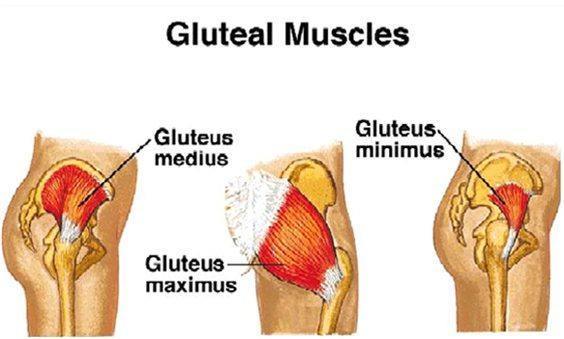Gluteus Medius Tear

The Gluteus medius is one of 3 muscles in the buttocks and is situated on the outer surface of the hip. The function of the gluteus medius is to assist with pelvic stability, hip abduction, along with internal and external rotation of the hip. Tears of the gluteus medius usually occur where the tendon inserts at the greater trochanter, causing pain on the outside of the hip.
Tears of the gluteus medius can occur due to traumatic injury or degenerative conditions such as tendinopathy (chronic inflammation of the gluteus medius tendon). Gluteus medius tears cause pain and weakness on the affected side of the hip.
Treatment
Initial treatment involves ice, non-steroidal anti-inflammatory drugs (NSAIDs) and activity modification to decrease pain and inflammation. If a severe, full-thickness gluteus medius tear is present, surgical repair may be required, requiring an endoscopic hip procedure.
Endoscopic Gluteus Medius Repair
An endoscopic gluteus medius repair is a “minimally-invasive” procedure involving three to four “poke-hole” incisions around the hip joint. A camera is introduced and the attachment site of the gluteus medius is visualized on a monitor. All “hip bursitis” tissue is removed initially. If a full-thickness or partial-thickness tear is present, it is repaired with bone anchors into the greater trochanter and suture passed through the ruptured tendon. The tendon is then pulled down to its normal anatomic position and tied over the bone.
Open Gluteus Medius Repair
In rare situations, if the tear is determined to be chronic and retracted significantly, an open procedure may be necessary to repair the gluteus medius tear. This would involve a several centimeter incision on the outside of your hip. The gluteus medius tendon is repaired with bone anchors into the great trochanter and suture is passed through the ruptured tendon. The tendon is then pulled down to its normal anatomic position and tied over the bone.
Dr. Gupta to give a lecture series at Georgetown yoga "Healthy Movements Workshop" focused specifically on hip, knee, and shoulder injury prevention and those patients with existing injuries in April and May.
Dr. Gupta is now "board certified" in Orthopedic Surgery.
Dr. Gupta to present Orthopedic Lecture Series with Sentara Northern Virginia Medical Center titled "Don't Let Hip Pain Slow You Down: Understanding Your Options", September 7th, 2016 at Hilton Garden Inn Woodbridge at 6pm.
Dr. Gupta to present third part of his lecture series on "Master Mobility" at Spark Yoga. His next lecture with be on "Mastering Mobility Of Your Knees" on September 18th at The Shops at Pershing, 2201 N Pershing Dr, Arlington, VA 22201










